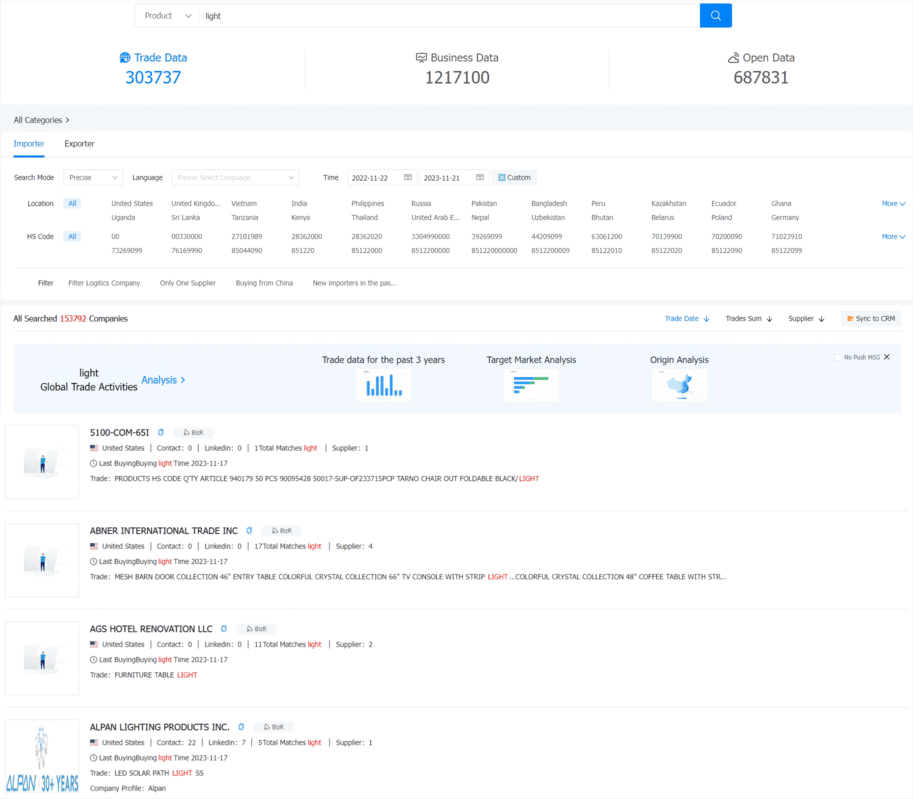 Trade Data
Trade Data
 2024-04-18
2024-04-18
In 2023, South Korea's total imports amounted to $642.6 billion, a decrease of -12.1% compared to $731.4 billion in 2022.

Where Does South Korea Import Goods From?
According to the latest import data from South Korea, 71.7% of imported products are purchased from exporters in the following countries: Mainland China (22.2%), the United States (11.2%), Japan (7.4%), Australia (5.1%), Saudi Arabia (5.11%), Vietnam (4%), Taiwan (3.8%), Germany (3.7%), the United Arab Emirates (2.6%), Malaysia (2.4%), Qatar (2.3%), and Indonesia (1.9%).
From the perspective of Mainland China, more than three-fifths (62%) of South Korea's total imports in 2023 were purchased from other Asian countries. European trading partners accounted for 13.7% of South Korea's import purchases, while an additional 13.4% of the value came from North America. Smaller proportions originated from Oceania, led by Australia (5.6%), Latin America (3.4%), and Africa (1.9%).
Top 10 Import Categories in South Korea
Based on two-digit Harmonized Tariff System (HTS) codes, according to the latest import data from South Korea, the top 10 imported products in 2023 accounted for three-quarters (75%) of the total value of products purchased from other countries:
1. Mineral fuels, including petroleum: $171.4 billion (26.7%)
2. Electrical machinery and equipment: $119.5 billion (18.6%)
3. Machinery, including computers: $63.1 billion (9.8%)
4. Vehicles: $22.1 billion (3.4%)
5. Optical, technical, medical apparatus: $22 billion (3.4%)
6. Inorganic chemicals: $21.5 billion (3.3%)
7. Ores, slag, ash: $19.7 billion (3.1%)
8. Iron and steel: $16.5 billion (2.6%)
9. Organic chemicals: $13.6 billion (2.1%)
10. Plastics and plastic products: $12.7 billion (2%)
Imports of inorganic chemicals drove the largest increase in South Korea's expenditure, growing modestly by 7.5% compared to 2022. Also growing were imports of South Korean vehicles, up by 2.2%.
The categories with the most significant declines in import value were organic chemicals, down -15.7%, iron and steel, down -13%, and ores, slag, and ash products, down -15.1%. For the latter category, South Korea's purchases of copper ores and concentrates decreased by -11.4% since 2022.
According to four-digit HTS codes, South Korea's most valuable import products are crude oil, integrated circuits and microcomponents, petroleum gases, processed petroleum, and coal, including solid fuels made from coal. Together, they accounted for 34.6% of South Korea's total import expenditure in 2023.
Customs data contains a vast amount of information, and extracting relevant customer contact information can be time-consuming, with results not always meeting expectations. Is it truly the case, or is it because customs data is being used incorrectly, resulting in wasted effort and time?
Utilizing customs data for customer development can be achieved by precisely characterizing all buyers and their procurement systems in the target market. This allows for the quick identification of the most compatible customers, discerning their credit systems and procurement information, determining high-quality customers and profit margins, enhancing development efficiency, and improving overall effectiveness.
In customs data, one can observe the suppliers of buyers. Some of these suppliers are trade companies and also potential customers. In-depth analysis can be conducted on these trade companies, and key customers can be selected for focused development. Information such as buyer contacts, trade partners, procurement cycles, and purchase volumes can be obtained. While customs data may lack contact information due to being derived from bill of lading information, Tendata iTrader provides not only customs data but also business and internet data. This allows for the direct extraction of contact information and positions based on buyer names, making customer development through customs data seamless. (>>> Click To Get Free Access To Customs Data From 80+ Countries)
For new customer development using customs data, three strategies are available for consideration. (>>> Click To Get Free Access To Customs Data From 80+ Countries)
1. Establishing a Customer Database by Country:
Building a customer database is akin to maintaining a work record. Start by using trade tracking features to compile a list of all customers in a country. Analyze each buyer's purchase volume, procurement cycle, product specifications, and supplier system. Finally, filter out 30% of the potential high-quality customers from this country and record them in your customer database, allowing flexible settings by country, time, customer name, follow-up steps, contact phone, email, contact person, etc. (>>> Click For Free Customer Development)
2. Establishing a Customer Database by Peer Companies:
Have a clear understanding of the English names of peer companies (including full names, abbreviations, etc.). Use the global supplier network feature to gather all customers of these peers in the system. Analyze these customers based on purchase volume, procurement cycle, and product models. Finally, filter out key customers from your targeted peers and record them in your customer database. (>>> Click For Free Trial Application)
3. Identifying Newly Appeared Customers in Each Country:
Utilize the trade search function to select a country, set date ranges, limit product names or customs codes, and check "latest." The search results will display high-quality customers that have recently appeared in that country during the specified time period. Since these customers are newly emerging, they may have unstable supplier relationships, requiring focused follow-up. Record these new potential buyers in your customer database. (>>> Click For Free Trial Application)

These three approaches for customer development using customs data can be implemented based on the actual needs of the company. Considering market conditions, industry characteristics, strategic requirements, etc., find a method that suits your preferences. The ultimate goal is to establish and organize a categorized archive of high-quality customers. Once suitable customers are identified, the next step is to make precise contact through various channels such as phone calls, email communication, online chat, etc.
Category
Leave Message for Demo Request or Questions


 T-info
T-info T-discovery
T-discovery

 My
Tendata
My
Tendata Market Analysis
Market Analysis Customer
Development
Customer
Development Competitor
Monitoring
Competitor
Monitoring Customer Relationship
Customer Relationship





































































































































